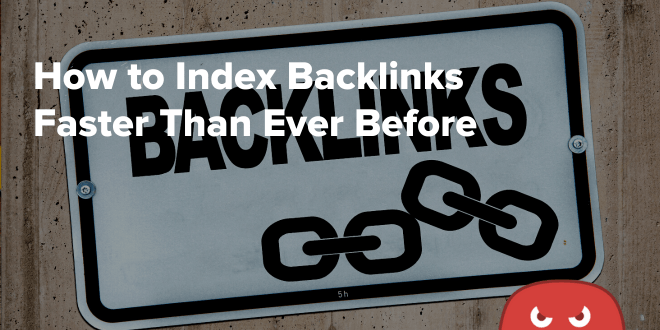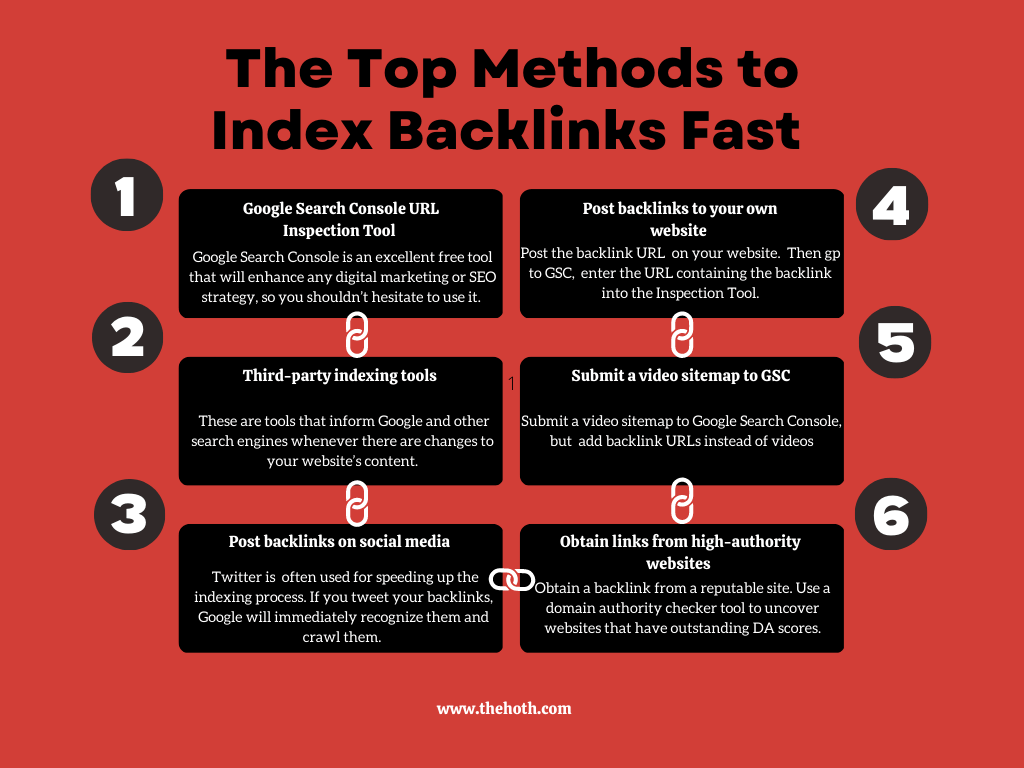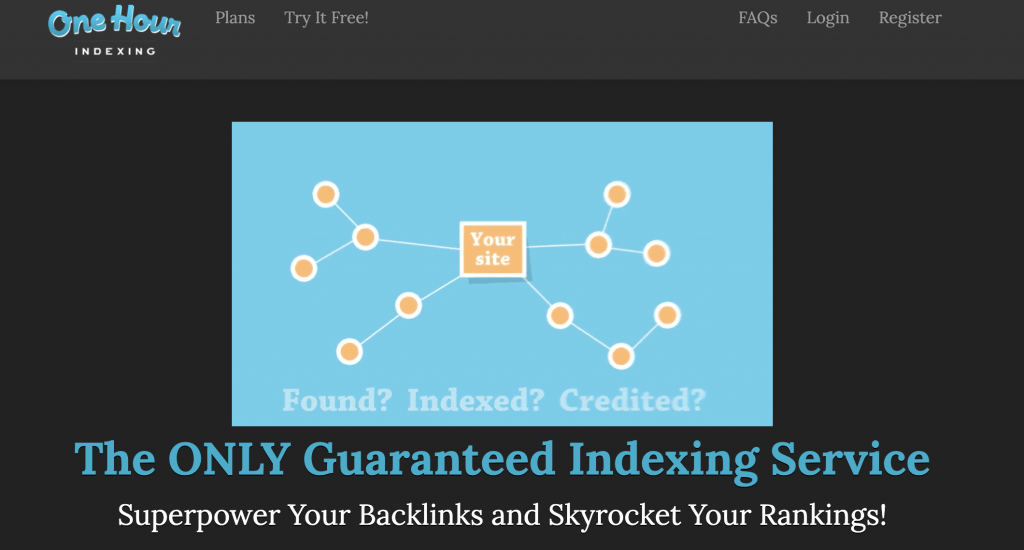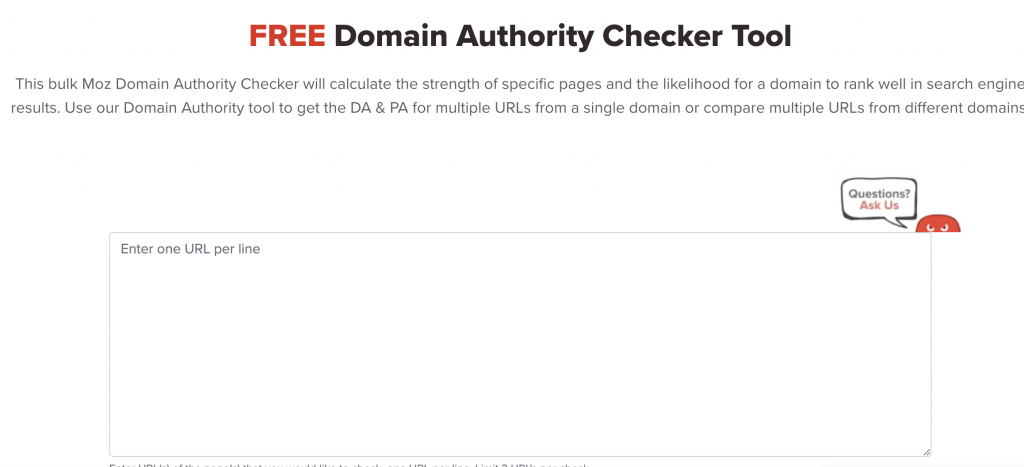Quick Links
Link-building is an integral aspect of search engine optimization (SEO) due to the impact high-authority backlinks have on SERP rankings.
For instance, the #1 ranked search result on Google has an average of 3.8x more backlinks than positions 2 – 10.
Also, a study by Ahrefs found that the more backlinks you have, the more organic traffic you’ll generate.
While these stats prove the importance & effectiveness of acquiring quality backlinks, there is a catch you need to know about.
If Google doesn’t have your new backlinks indexed, they won’t provide any ‘link juice’ to your SEO profile.
Just as Google needs to be able to index your website for it to show up on the SERPs, it also needs to index backlinks in the same way.
To make things even more complicated, it takes quite some time to update Google’s index. It can take as long as 10 weeks for a new backlink to get indexed.
However, that’s not always the case.
High-quality websites like The New York Times and Wikipedia get their backlinks indexed the same day they’re published at close to a 100% rate.
Yet, backlinks from less notable sites will take longer to index, and they’re the backlinks most SEOs target.
The good news is there are ways to speed up the indexing process, which is exactly what we will show you today. Read on to learn how to index backlinks quickly & efficiently.
The Top Methods to Index Backlinks Fast
Tired of waiting countless weeks for your newly acquired backlinks to show up in Google’s index?
Then you need to rethink your approach to indexing your backlinks.
There are numerous ways you can get search engines to index your backlinks quicker, including the following:
- Pinging tools
- Social shares
- Third-party indexing services
- Acquiring backlinks from high-authority sites
- Google Search Console
- Backlink indexer tools
Here’s a look at the best tricks for getting your new links indexed as quickly as possible.
Google Search Console URL Inspection Tool
Google Search Console is an excellent free tool that will enhance any digital marketing or SEO strategy, so you shouldn’t hesitate to use it.
In terms of using it to index backlinks, the URL Inspection Tool is your secret weapon.
However, to use it, you either need control of the website linking back to you, or you need to know the webmaster. That’ll enable you to coordinate with them to get your backlink indexed.
Here’s how to make it happen:
- Log in to GSC and select the URL Inspection Tool from the sidebar on the left.
- Enter the URL of the backlink into the tool and hit ‘enter’ to inspect it.
- Hit the ‘Request Indexing’ button so that Google will recrawl the page in question.
That’ll trigger Google bots to crawl and index any backlinks that you have on the page, which is what you want.
This method is fast and effective, but you’ll need to know the exact URL of the backlink. If you don’t know it, you can use our free backlink checker tool from The HOTH to see the specific URL for all your backlinks.
In addition, you need to have a relationship with the owner of any web pages that you enter into the URL Inspection Tool, as you can’t submit another website’s pages via GSC unless you can verify ownership of the domain.
If you aren’t able to get in contact with the webmaster that owns the site linking to yours, you’ll need to use another method on this list (one of which is a workaround).
Third-party indexing tools
Besides using GSC’s URL Inspection Tool, you can also utilize third-party link indexers to index backlinks.
What are those?
They’re tools that inform Google and other search engines whenever there are changes to your website’s content.
It could be that you’re adding a new page, deleting one, or updating a web page with new content. Whatever the case, a third-party indexer will ping search engines whenever changes are made, causing their crawlers to reindex your pages and add them to PageRank.
One of the most popular third-party indexers is IndexNow, which features a ping protocol that notifies search engines whenever your website goes through changes.
In addition to being a great way to index backlinks, these tools are also great for the general indexing of your website. Whenever you delete a page, Google will instantly know about it, which will make your technical SEO much easier down the line.
However, there is a slight catch to using programs like IndexNow – as you have to implement their ping protocol for the tool to work.
Doing so is easier said than done, as you’ll need to use services like CloudFlare or the IndexNow plugin to make it work, which takes quite a bit of time.
Then there’s Onehourindexing, a third-party indexer that doesn’t require the installation of a ping protocol. Instead, it uses a proprietary system kept secret from the general public to index backlinks.
It’s a quick and easy way to index your backlinks, but it does come at a cost. A subscription to Onehourindexing costs $17 per month to index 1,000 a day – so you need to include that in your link-building campaign’s budget.
Post backlinks on social media
Believe it or not, an excellent way to speed up backlink indexing is to share your backlinks on social media platforms.
In particular, Twitter holds the most clout for speeding up the indexing process.
Since 2015, Google has partnered with Twitter to index tweets in real-time. Beyond that, Google also includes Twitter carousels as one of its many SERP features.
That means if you tweet your backlinks, Google will immediately recognize them and crawl them.
Yet, as with the other methods, there is a catch to this process.
Since there are countless tweets every single day, Google isn’t able to index every single tweet on the platform.
However, there are steps you can take to increase the chances of Google indexing the tweets containing your backlinks, including the following:
- Try to get as many retweets as possible
- Encourage your followers to like tweets containing backlinks
- Try to get as many replies as possible
The more retweets, likes, and responses a tweet gets – the more likely Google is to index it.
So once you post a tweet containing a new backlink, do your best to encourage interaction from your audience.
Besides Twitter, Google also indexes content from Pinterest, LinkedIn, Reddit, and Quora. Accordingly, you should post your backlink URLs to these platforms as well to increase the chances of Google crawling & indexing them.
Post backlinks to your own website
This tactic may seem counterintuitive at first, but it really works. In fact, it’s a workaround to help you use GSC’s URL Inspection Tool without knowing the site owner that created the backlink.
All you have to do is post the backlink URL somewhere on your website.
From there, head over to GSC, enter the URL containing the backlink into the Inspection Tool, and hit the ‘Request Indexing’ button.
Voila, now Google’s bots will recrawl your site and discover the backlink you just posted.
The best part?
You can immediately remove the backlink from your site once Google has recrawled your web page. That way, you’ll be able to quickly index your backlinks without cramming your website with a ton of your own backlinks.
So once you’ve used the URL Inspection Tool, go back to your web page and remove the hyperlink.
In the SEO world, that’s what we call having your cake and eating it too.
Submit a video sitemap to GSC
This next method is particularly effective for indexing a bunch of new backlinks at once.
It works by submitting a video sitemap to Google Search Console, but you add backlink URLs instead of videos.
A video sitemap is just an XML sitemap that contains information about the videos hosted on your website. Yet, it’s relatively easy to replace video URLs with backlinks for quick indexing.
To make the method work, pick any random video on YouTube or Vimeo and embed it on one of your web pages.
Next, visit a site like XML-Sitemaps that will detect your embedded video and create a separate XML sitemap for it. After that, you can use a program like Notepad to open the sitemap and start editing it.
Once it’s open, you need to replace the URLs contained within the <loc> </loc> tags with your backlink URLs. As soon as that’s done, save the sitemap, and head over to Google Search Console.
On the left-hand sidebar menu, select Index > Sitemaps. From there, you can upload your video sitemap to GSC, which will cause Google’s algorithm to crawl & index all the backlink URLs contained within it.
Obtain links from high-authority websites
As stated previously, well-established websites like The New York Times get their backlinks indexed as soon as they’re published.
That means if you’re able to obtain a backlink from such a reputable site, you won’t have to worry about the indexing process nearly as much or at all.
While it may be difficult to acquire backlinks from juggernauts like The New York Times, you can always use our free domain authority checker tool to uncover websites that have outstanding DA scores – which means Google will index them far more frequently.
Wrapping Up: How to Index Backlinks Fast
While backlinks will boost your online visibility, they must first be properly indexed by search engines to do so.
The indexing process takes quite some time for less notable websites, but the techniques listed in this article will help you speed things up in a big way.
Also, don’t forget to leverage our free tools for checking backlinks and domain authority to make the entire process easier.
Do you need help forming a rock-solid link-building strategy at your company?
If so, don’t wait to check out HOTH Link Outreach, our five-star service for acquiring backlinks from top-ranking sites. We also have plenty of tricks up our sleeves to get your backlinks indexed, so don’t wait to get in touch with us today.














Thank you, Clayton Johnson, I am going to implement all these methods let hope they work.
Thanks Kenny, I’ll give some of these a go. If I’m really desperate, I use a tool called index me now and it works very well, but you do have to pay for each link that you need help indexing. But if it isn’t successful, they do refund the credit. Worth checking out!
I’m Not getting crawled my backlinks as Expected but few o0f them are getting crawled.. But now I’ll apply these tips and tricks for backlink Crawling …. Thanks
Thanks, this is really helpful. I had issues in the past with links taking ages to show.